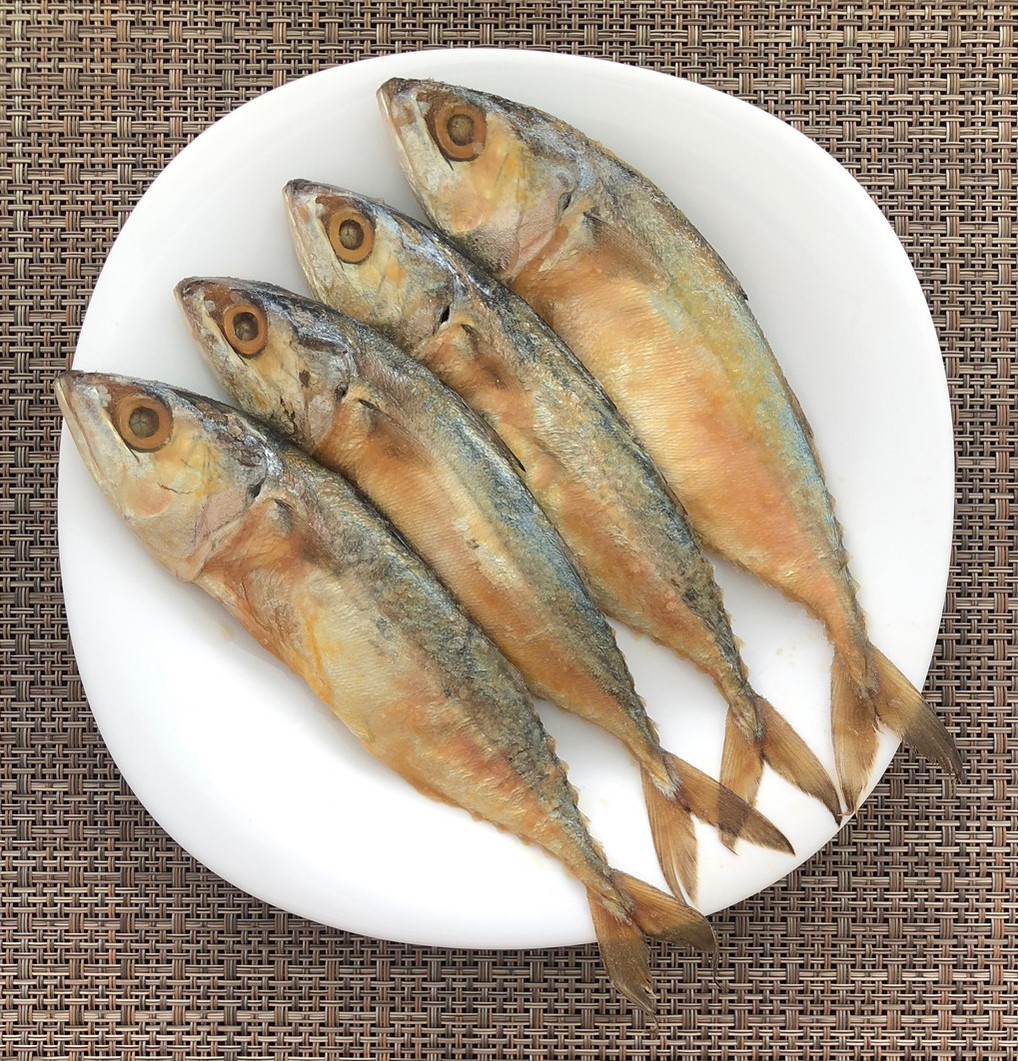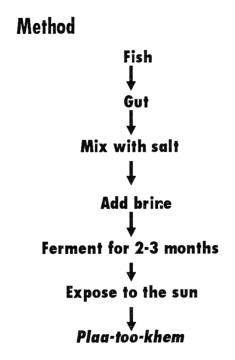Plaa-too-khem
- Name (Thai)
- ปลาทูเค็ม
- Name (English)
- Salted mackerel
- Local name
- Plaa-too-khem
- Fish normally used
-
Rastrelliger brachysoma, (Too)
Rastrelliger kanagurta (Too-mong, Lang)
- Product
- Fishery
- Ingredients
- Sea water fish and sea salt.
- Fermentation
- 2-3 months.
- Storage life
- 1 year.
- Microorganisms
-
該当なしNot available
- Properties
- Partly dried eviscerated fish with brown fat and flesh of more or less pasty consistency and fresh red colour. The taste is salty, and its peculiar odor is partly attributable to methyl ketones.
- Method
- Eviscerate the fish by pulling the gills and intestines out through the throat. Add the salt in the ratio of 2.5:1 by weight and mix well in a vat. The gutted fish is not washed before salting because the pickled blood gives a better brine for Nam-plaa and this does not affect the appearance of the final product. When the vat is filled, saturated brine is added to cover the fish After some time, usually 5-10 hours, the fish are weighed down, then covered with brine. If the salting has been properly done, and the raw material is fresh, the fish will be in good condition for up to about 3 months. The fermentation period is about 3 months. The fish are then taken out of the vat and put in a basket to wash, by quickly rotating the basket in water. The fish are then spread out in the sun to dry. On drying the yield of salted fish is about 60%. The fish should be consumed within 6 months, after which the product will still be edible but of inferior quality.
- Production
- In small-scale industry.
- Consumption
- The fish is grilled or fried in oil then Topped with chopped shallots, bird chilli and lime juice, and eaten with rice.


